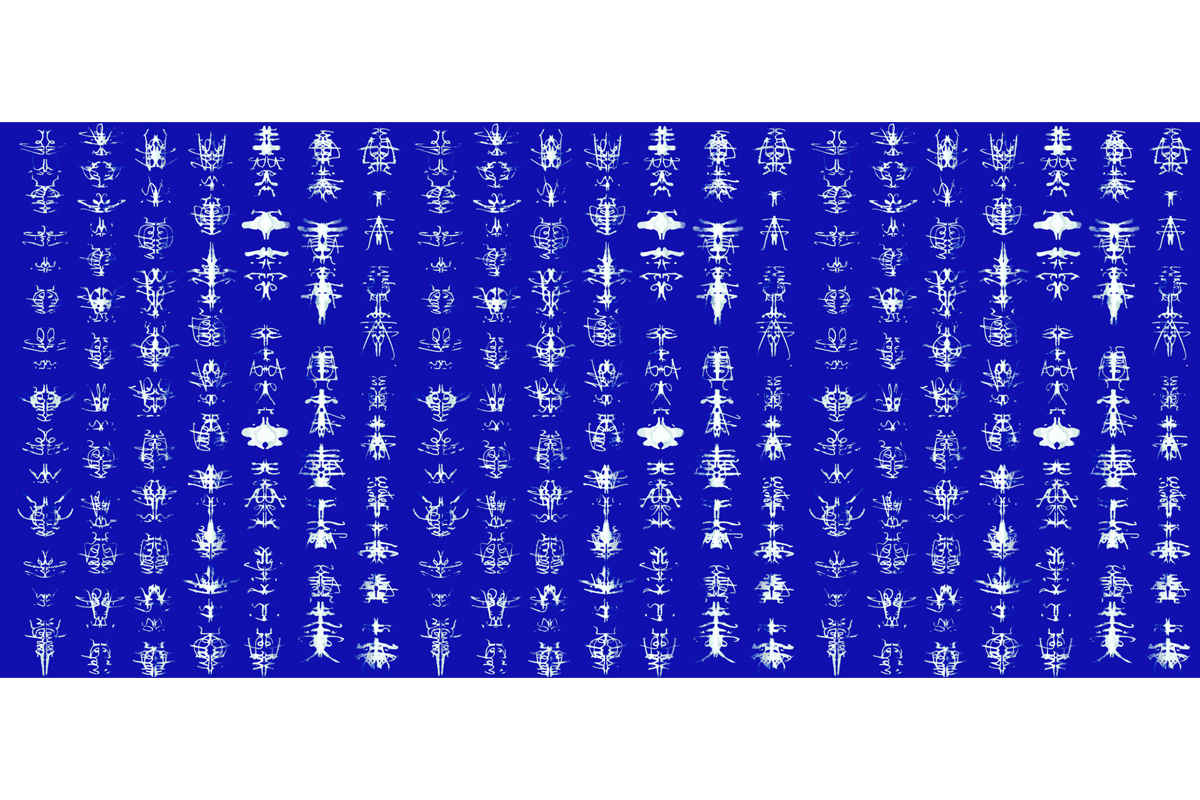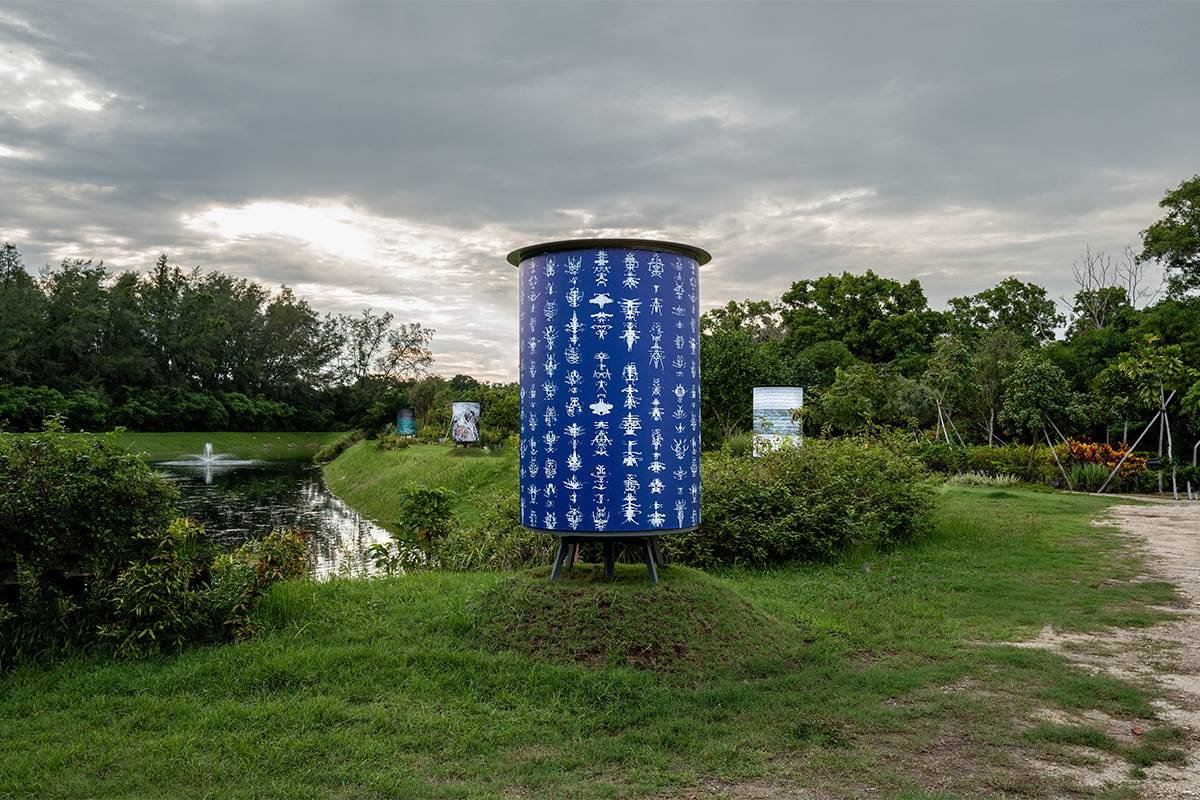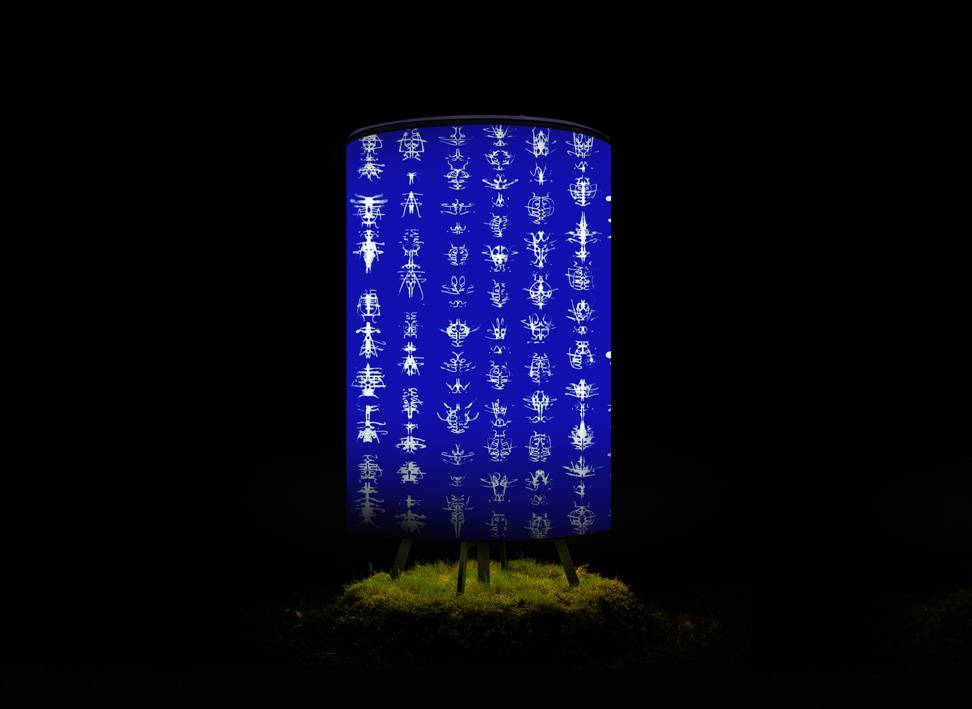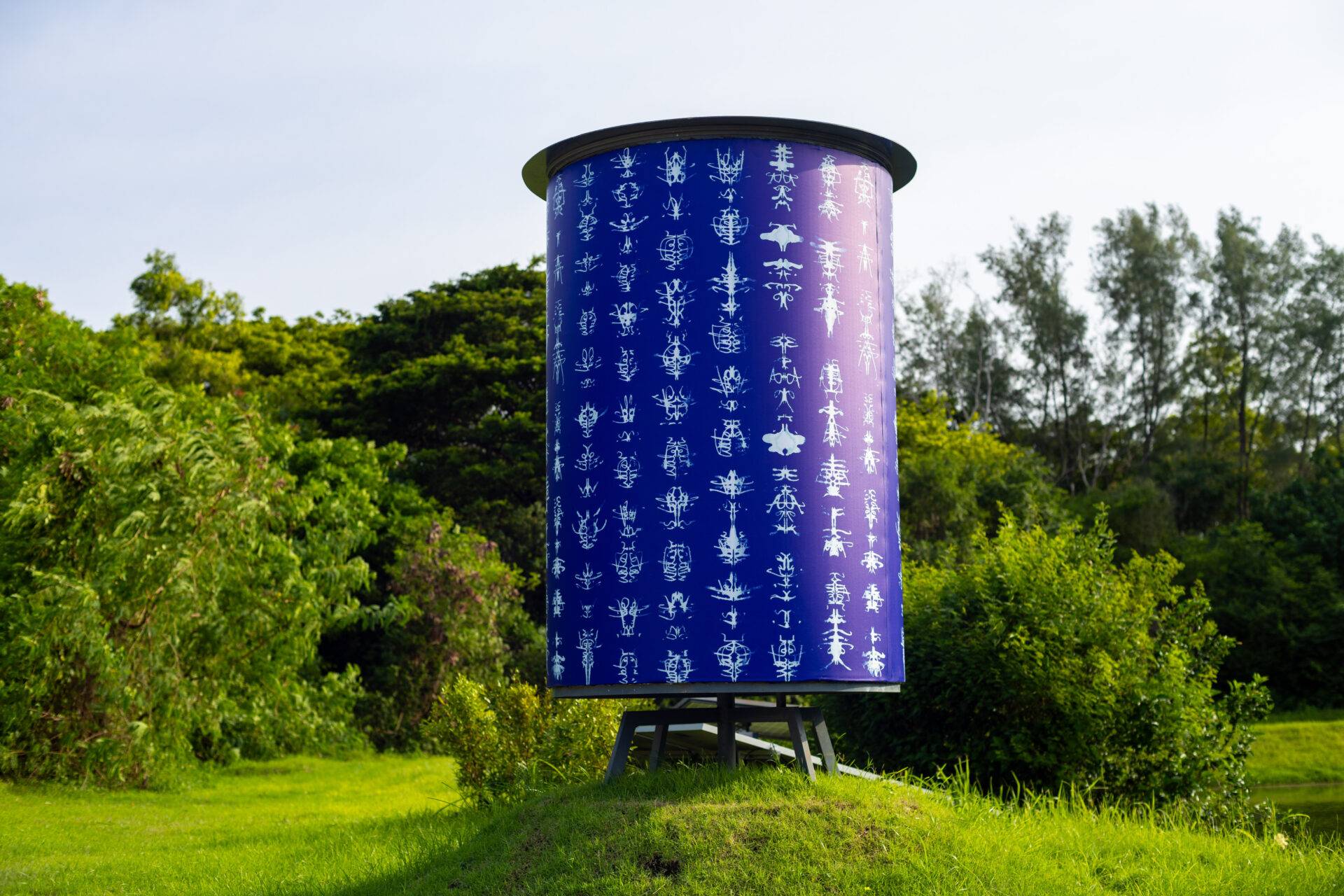LOVE LETTER: WATER IS LIFE
2024
Katie Holten
Holten writes and rewrites the phrase “water is life” in blue ink on white paper. As she writes, she gently caresses each letter, pressing them like flower petals preserved between the pages of a book. The letters and words mirror themselves, like reflections in water.
Playing with the physicality of language, Holten’s handwriting looks like entomological specimens. The intricate drawings appear like hieroglyphics, revealing their message only on close examination.
The Lakota phrase “Mni wichoni” (“Water is life”) was the protest anthem from Standing Rock heard around the world, but it also has a spiritual meaning rooted in Indigenous world views. For Native Americans, water does not only sustain life, it is sacred.
Holten writes and rewrites the phrase “water is life” in blue ink on white paper. As she writes, she gently caresses each letter, pressing them like flower petals preserved between the pages of a book. The letters and words mirror themselves, like reflections in water.
Playing with the physicality of language, Holten’s handwriting looks like entomological specimens. The intricate drawings appear like hieroglyphics, revealing their message only on close examination.
The Lakota phrase “Mni wichoni” (“Water is life”) was the protest anthem from Standing Rock heard around the world, but it also has a spiritual meaning rooted in Indigenous world views. For Native Americans, water does not only sustain life, it is sacred.
Water is Life is a simple statement that asks how can we create cross-cultural understanding for a river’s rights to protection? How do we help guarantee such “rights of nature” in mainstream jurisprudence?
“Never again,” they vowed. “Water is life. Mni Wiconi. This is all we have left — our river, and the lands you didn ’t take last time. ”
—Chante Tin’sa Kinanzi Po
What is the language we need to live right now?
How can we learn to be better lovers of the world?
LOVE LETTER: WATER IS LIFE
2024
Katie Holten
Holten writes and rewrites the phrase “water is life” in blue ink on white paper. As she writes, she gently caresses each letter, pressing them like flower petals preserved between the pages of a book. The letters and words mirror themselves, like reflections in water.
Playing with the physicality of language, Holten’s handwriting looks like entomological specimens. The intricate drawings appear like hieroglyphics, revealing their message only on close examination.
The Lakota phrase “Mni wichoni” (“Water is life”) was the protest anthem from Standing Rock heard around the world, but it also has a spiritual meaning rooted in Indigenous world views. For Native Americans, water does not only sustain life, it is sacred.
Holten writes and rewrites the phrase “water is life” in blue ink on white paper. As she writes, she gently caresses each letter, pressing them like flower petals preserved between the pages of a book. The letters and words mirror themselves, like reflections in water.
Playing with the physicality of language, Holten’s handwriting looks like entomological specimens. The intricate drawings appear like hieroglyphics, revealing their message only on close examination.
The Lakota phrase “Mni wichoni” (“Water is life”) was the protest anthem from Standing Rock heard around the world, but it also has a spiritual meaning rooted in Indigenous world views. For Native Americans, water does not only sustain life, it is sacred.
Water is Life is a simple statement that asks how can we create cross-cultural understanding for a river’s rights to protection? How do we help guarantee such “rights of nature” in mainstream jurisprudence?
“Never again,” they vowed. “Water is life. Mni Wiconi. This is all we have left — our river, and the lands you didn ’t take last time. ”
—Chante Tin’sa Kinanzi Po
What is the language we need to live right now?
How can we learn to be better lovers of the world?
LOVE LETTER: WATER IS LIFE
2024
Katie Holten
Holten writes and rewrites the phrase “water is life” in blue ink on white paper. As she writes, she gently caresses each letter, pressing them like flower petals preserved between the pages of a book. The letters and words mirror themselves, like reflections in water.
Playing with the physicality of language, Holten’s handwriting looks like entomological specimens. The intricate drawings appear like hieroglyphics, revealing their message only on close examination.
The Lakota phrase “Mni wichoni” (“Water is life”) was the protest anthem from Standing Rock heard around the world, but it also has a spiritual meaning rooted in Indigenous world views. For Native Americans, water does not only sustain life, it is sacred.
Holten writes and rewrites the phrase “water is life” in blue ink on white paper. As she writes, she gently caresses each letter, pressing them like flower petals preserved between the pages of a book. The letters and words mirror themselves, like reflections in water.
Playing with the physicality of language, Holten’s handwriting looks like entomological specimens. The intricate drawings appear like hieroglyphics, revealing their message only on close examination.
The Lakota phrase “Mni wichoni” (“Water is life”) was the protest anthem from Standing Rock heard around the world, but it also has a spiritual meaning rooted in Indigenous world views. For Native Americans, water does not only sustain life, it is sacred.
Water is Life is a simple statement that asks how can we create cross-cultural understanding for a river’s rights to protection? How do we help guarantee such “rights of nature” in mainstream jurisprudence?
“Never again,” they vowed. “Water is life. Mni Wiconi. This is all we have left — our river, and the lands you didn ’t take last time. ”
—Chante Tin’sa Kinanzi Po
What is the language we need to live right now?
How can we learn to be better lovers of the world?
LOVE LETTER: WATER IS LIFE
2024
Katie Holten
Holten writes and rewrites the phrase “water is life” in blue ink on white paper. As she writes, she gently caresses each letter, pressing them like flower petals preserved between the pages of a book. The letters and words mirror themselves, like reflections in water.
Playing with the physicality of language, Holten’s handwriting looks like entomological specimens. The intricate drawings appear like hieroglyphics, revealing their message only on close examination.
The Lakota phrase “Mni wichoni” (“Water is life”) was the protest anthem from Standing Rock heard around the world, but it also has a spiritual meaning rooted in Indigenous world views. For Native Americans, water does not only sustain life, it is sacred.
Holten writes and rewrites the phrase “water is life” in blue ink on white paper. As she writes, she gently caresses each letter, pressing them like flower petals preserved between the pages of a book. The letters and words mirror themselves, like reflections in water.
Playing with the physicality of language, Holten’s handwriting looks like entomological specimens. The intricate drawings appear like hieroglyphics, revealing their message only on close examination.
The Lakota phrase “Mni wichoni” (“Water is life”) was the protest anthem from Standing Rock heard around the world, but it also has a spiritual meaning rooted in Indigenous world views. For Native Americans, water does not only sustain life, it is sacred.
Water is Life is a simple statement that asks how can we create cross-cultural understanding for a river’s rights to protection? How do we help guarantee such “rights of nature” in mainstream jurisprudence?
“Never again,” they vowed. “Water is life. Mni Wiconi. This is all we have left — our river, and the lands you didn ’t take last time. ”
—Chante Tin’sa Kinanzi Po
What is the language we need to live right now?
How can we learn to be better lovers of the world?
ARTWORK
ARTWORK
ARTWORK








